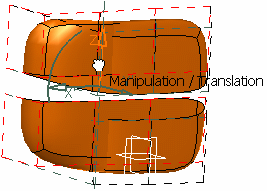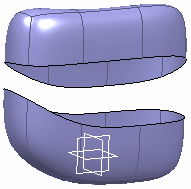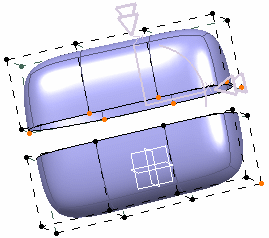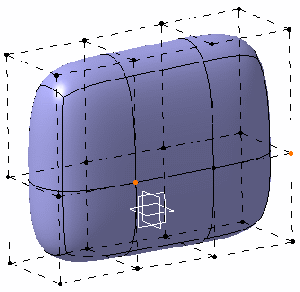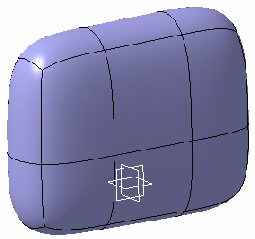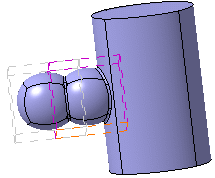Selecting Multiple Surfaces | |||
| |||
![]()
Use one subdivision surface to modify another
You can select a surface in order to modify another one.
Important:
|
![]()
Smart Selection of Multiple Surfaces
In case a feature has more than one parent, you can select and modify the required subdivision surfaces using the Crtl key.
Here is the example we use for this scenario:
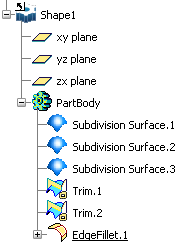
Using the Parents/Children... contextual menu item, you can see that the edge fillet feature (EdgeFillet.1) has the three subdivision surfaces as parents.
| Important: If the Ctrl key is not pressed and you select a surface in geometry, the modification of the selected surface starts without any validation. |
